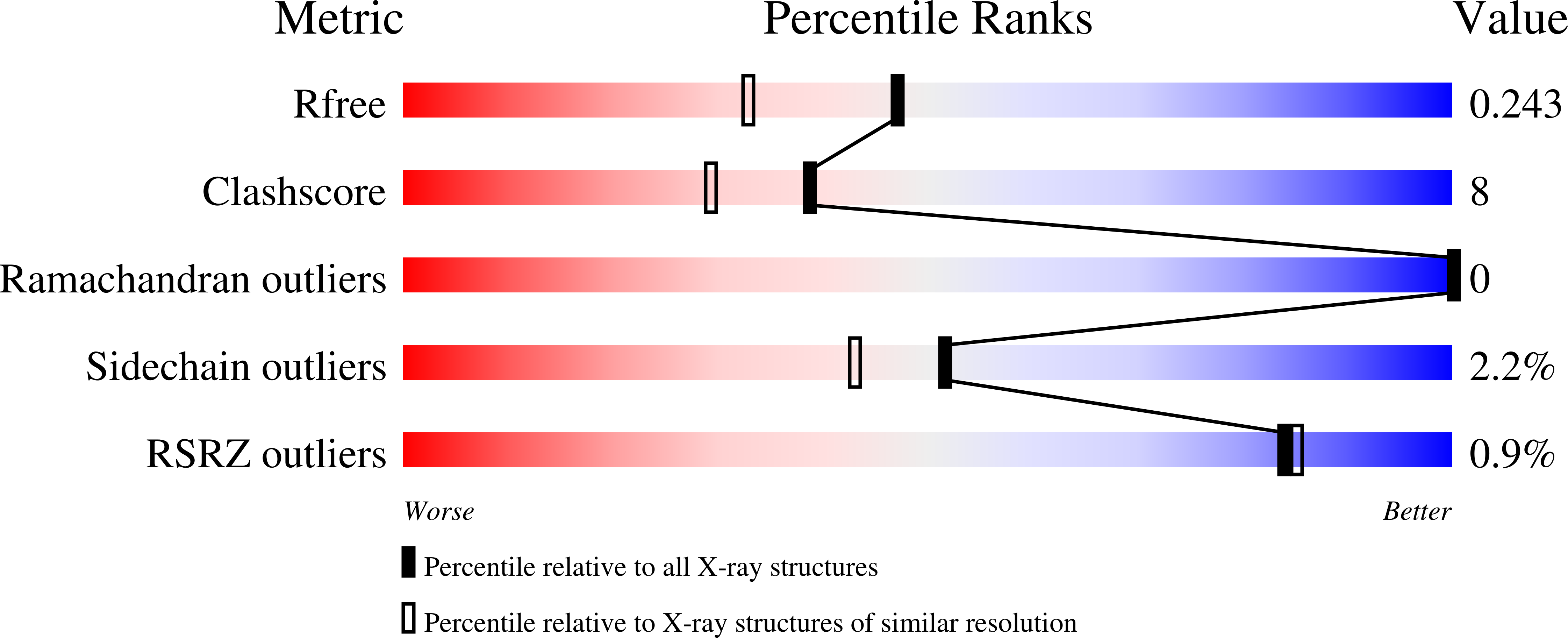ATP Half-Sites in Rada and Rad51 Recombinases Bind Nucleotides
Marsh, M.E., Scott, D.E., Ehebauer, M.T., Abell, C., Blundell, T.L., Hyvonen, M.(2016) FEBS Open Bio 6: 372
- PubMed: 27419043
- DOI: https://doi.org/10.1002/2211-5463.12052
- Primary Citation of Related Structures:
4A6P, 4A6X, 4B2P, 4D6P, 4UQO - PubMed Abstract:
Homologous recombination is essential for repair of DNA double-strand breaks. Central to this process is a family of recombinases, including archeal RadA and human RAD51, which form nucleoprotein filaments on damaged single-stranded DNA ends and facilitate their ATP-dependent repair. ATP binding and hydrolysis are dependent on the formation of a nucleoprotein filament comprising RadA/RAD51 and single-stranded DNA, with ATP bound between adjacent protomers. We demonstrate that truncated, monomeric Pyrococcus furiosus RadA and monomerised human RAD51 retain the ability to bind ATP and other nucleotides with high affinity. We present crystal structures of both apo and nucleotide-bound forms of monomeric RadA. These structures reveal that while phosphate groups are tightly bound, RadA presents a shallow, poorly defined binding surface for the nitrogenous bases of nucleotides. We suggest that RadA monomers would be constitutively bound to nucleotides in the cell and that the bound nucleotide might play a structural role in filament assembly.
Organizational Affiliation:
Department of Biochemistry University of Cambridge UK; Present address: Paul Scherrer Institut Villingen Switzerland.




















